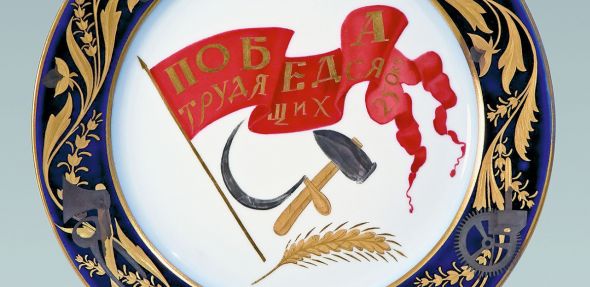
We are very pleased to announce a special addition to the ‘Revolution’ public lecture series hosted by CamCREES and the Slavonic Studies Section at Cambridge - a presentation by Petr Aven on Propaganda porcelain: The mirror of the Russian revolution and its consequences.
Porcelain was perhaps the most surprising material to be used for propaganda art following the Russian Revolution. The Imperial Porcelain Factory, founded in the mid-18th century, was requisitioned by the State, and some of the most talented avant-garde artists of the age were set to work there. The result was a strikingly original and distinctive art form that retains its freshness and vitality to this day.
Petr Aven is an economist, businessman and art collector. Chair of Alfabank for many years, he is author of several articles and books on the Russian economy, and he holds a Chair at Moscow’s Higher School of Economics. Ceramics from his collection formed part of the “Revolution” exhibition at the Royal Academy in 2017.
Don’t miss this exciting event, which will take place in the Umney Theatre of Robinson College at 17:30 on Tuesday, 20 February 2018.
The presentation is free and open to the public.





